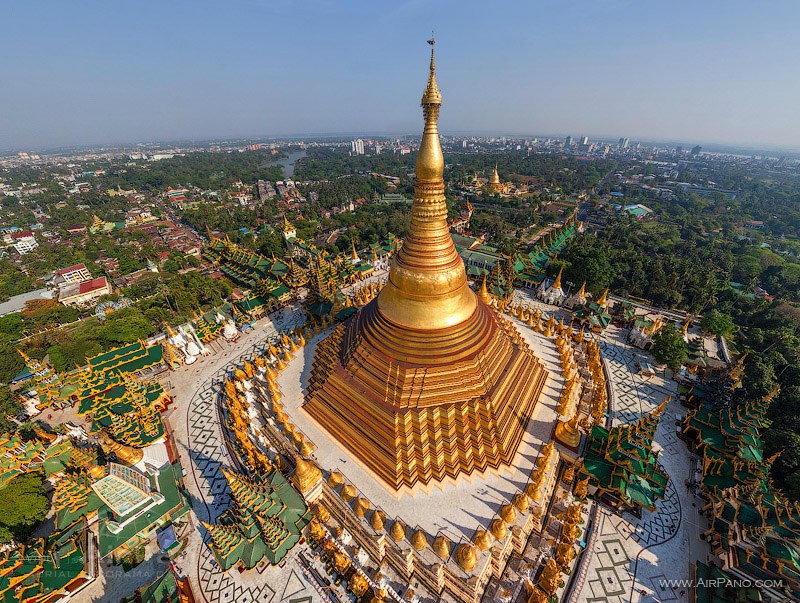
Rudyard Kipling was oh-so right when, in his reflections on his 1899 visit to the Shwedagon Pagoda, he wrote, “This is Burma, and it will be quite unlike any land you know about.” The country is changing rapidly, and though traveling here might be easier in the future, it will likely be less colorful. A push for tourists often means the scrubbing away of local charm. It’s the catch-22 faced by all developing countries: Better visitor infrastructure means fewer chances for authentic experiences. Still, now’s the time to go, and here’s what to see when you get there:
As with seeing the Taj Mahal, you’ll be gobsmacked the first time you lay eyes on this 2,500-year-old gilded pagoda. The 360-foot-tall structure is visible as you fly into Yangon, so don’t miss your opportunity to get an aerial shot. During Burma’s hottest months, the prime time to visit the pagoda is at night, when it’s slightly cooler and your feet — you have to remove your shoes to enter — won’t burn. Cover your shoulders and knees; you can borrow a sarong at the admission counter.
Angkor Wat’s got nothing on these 2,200 temples, which were constructed between the 11th and 13th centuries. They seem to pop up out of nowhere; you’ll be cycling along a dirt road and suddenly here are these well-preserved — and in some cases, recently restored — pagodas and stupas. The first time you see two dozen of them spread out in front of you, your jaw will drop.
Burma’s second largest lake covers 45 square miles and is home to a number of endemic species. Roughly 70,000 people live in the towns bordering the lake, on the lake’s shores and even on the lake itself, in houses built upon stilts. The local male population’s rowing technique is quite impressive. While standing at the stern on one leg perched like an ostrich, they wrap their other leg around the oar and use it to paddle.
I had mixed feelings about Mandalay (the second largest city in Burma), which is quite dusty, but those with a keen interest in history should not miss the Mandalay Palace, former home to Burma’s last monarchy. The palace was built between 1857 and 1859, but in 1885, the royal family was exiled to India when the British invaded Mandalay. Used as a depot by Japan in World War II, almost the entire palace was destroyed by bombing from Allied forces, but has since been reconstructed. Today, the official residence errs on the side of disrepair but is none-the-less impressive and is only a short walk from Mandalay Hill.
